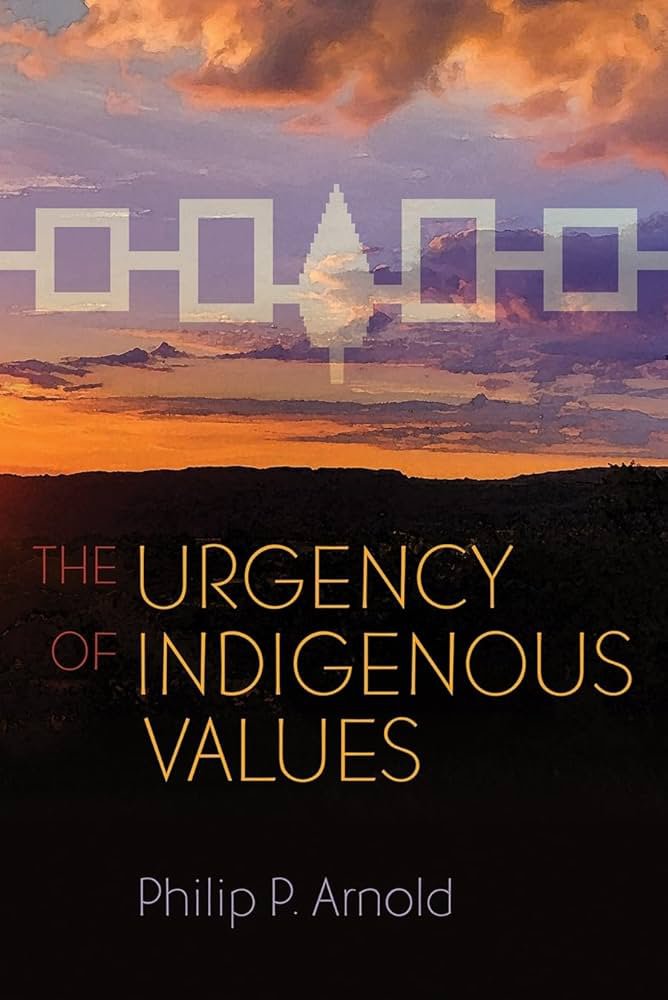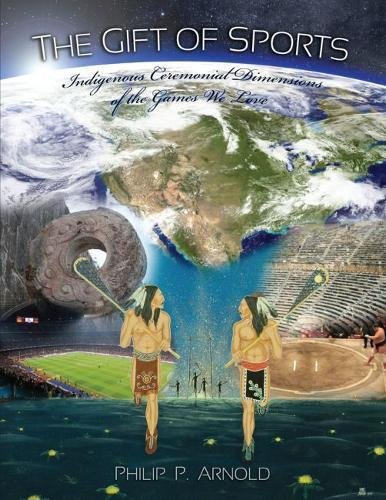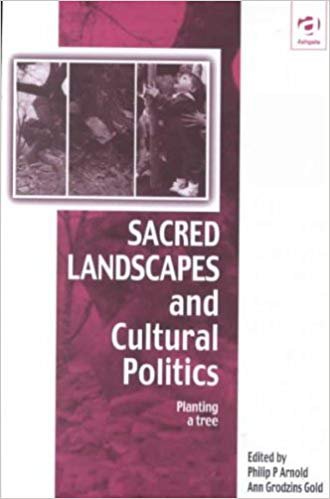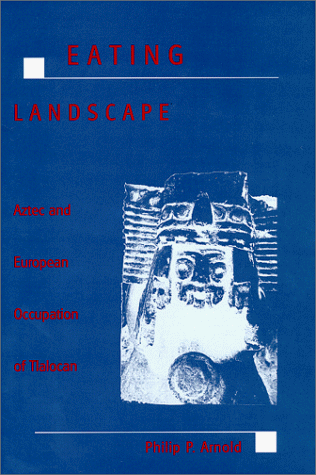Philip P. Arnold
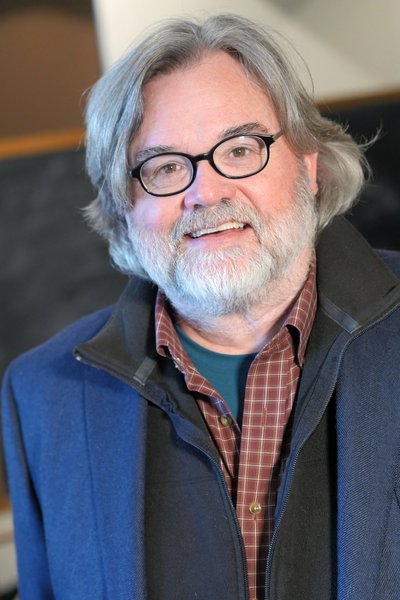
Philip P. Arnold
Associate Professor
CONTACT
Center for Global Indigenous Cultures and Environmental Justice
Religion
508 Hall of Languages
Email: pparnold@syr.edu
Office: 315.443.3861
PROGRAM AFFILIATIONS
Environment, Sustainability, and Policy [ILM]
Iroquois Linguistics for Language Learners
Native American and Indigenous Studies
Degrees
- Ph.D., History of Religions, University of Chicago Divinity School (1992)
- M.A., Institute of Archaeology/Latin American Studies, University of London (1986)
- B.A., Religious Studies, University of Colorado-Boulder (1985, magna cum laude)
Social/Academic Links
Courses Taught
- REL 101 Religions of the World
- REL 103 Religion and Sports
- REL 142 Native American Religions
- REL 244 Indigenous Religions
- REL 347 Religion and the Conquest of America
- REL 348 Religion and American Consumerism
- REL 400/600 Discovery & Indigenous Peoples
- REL 449 Religious Dimensions of Whiteness
- REL 642/ANT 691 Critical Issues in the Study of Native Americans
- REL 693 Materiality of Religion
Philip P. Arnold is an Associate Professor of the Department of Religion at Syracuse University, as well as a core faculty member of Native American and Indigenous Studies. He is the Founding Director of the Skä·noñh—Great Law of Peace Center, which repurposes the site that formerly celebrated the Jesuits coming to Onondaga Nation Territory in 1656-58. The new Center now tells the ancient story of the formation of the Longhouse tradition known as the Great Law of Peace at Onondaga Lake and its influences on American culture. The Skä·noñh—Great Law of Peace Center is a collaborative enterprise between the Onondaga Nation, Onondaga County, the Onondaga Historical Association, Syracuse University and 4 other educational institutions in the Syracuse area. His books are Eating Landscape: Aztec and European Occupation of Tlalocan (1999); Sacred Landscapes and Cultural Politics: Planting a Tree (2001); The Gift of Sports: Indigenous Ceremonial Dimensions of the Games We Love (2012) and Urgency of Indigenous Religions (University of New Mexico Press, forthcoming). He is a member of NOON (Neighbors of the Onondaga Nation), an organization of the Syracuse Peace Council. In 2007 he organized the Doctrine of Discovery Study Group to discuss the legacy of Christianity in the destruction of Indigenous peoples. He is the President of the Indigenous Values Initiative, which is a non-profit organization to support the work of the Skä·noñh—Great Law of Peace Center and other organizations and initiatives to educate the general public about the indigenous values of the Haudenosaunee.
- Director of the Skä·noñh—Great Law of Peace Center at Onondaga Lake, 2016-present.
- Chair, Department of Religion, Syracuse University, 2016-present.
- Associate Professor, History of Religions/American Religions, 1999-present.
- Director of Graduate Studies, Department of Religion, Syracuse University, 1999-2002.
- Assistant Professor, Department of Religion, Syracuse University, 1996-1999.
- Assistant Professor, Indigenous Religions, Department of Religious Studies, University of Missouri-Columbia (and adjunct Assistant Professor of Anthropology), 1992-1995.
- Lecturer, Department of Religious Studies, University of Missouri-Columbia, 1990-1992.
- Part-time Faculty in Religion at Illinois Benedictine College, 1989.
(Jan. 7, 2022)
Professor Philip Arnold is principal investigator on a Luce Foundation grant awarded to Syracuse University to explore the impact of the Doctrine.
(March 4, 2019)
Upcoming events cast new light on Native American, abolitionist narratives
(Sept. 6, 2017)
Weekend events celebrate Creator’s Game, Haudenosaunee values
(March 9, 2017)
Despite calls for divestment, completion of DAPL signals new chapter in Standing Rock conflict
(Dec. 13, 2016)
Recent events at Standing Rock spark new questions about sacredness, environment, tribal nation sovereignty
(Oct. 5, 2016)
Haudenosaunee Wooden Stick Festival on Oct. 8 to showcase Native American traditions
(June 23, 2016)
Project will help inspire students to become responsible environmental stewards
(Nov. 19, 2015)
New lakeside facility gives voice to Haudenosaunee history, values
- "Indigenous “Texts” of Inhabiting the Land: George Washington’s Wampum Belt and the Canandaigua Treaty." In Iconic Books and Texts. Edited by James W. Watts. Equinox. Pp. 361-372. 2013.
- "Sacred Landscapes and Global Religion: Reflections on the Significance of Indigenous Traditions on University Culture." In Religion And Global Culture: New Terrain in the Study of Religion and the Work of Charles H. Long. Edited by Jennifer Reid. Lexington Press. Pp. 29-49. 2003.
- "Haudenosaunee (Iroquois) Thanksgiving and Private Property in Upstate New York." Sekai no minshu shukyo (Folk Religions in the World), ed. Michio Araki. Kyoto: Minerva Publishing Company. In press, 2002.
- "Paper Rituals and the Mexican Landscape," in Representing Ritual: Performance, Text, and Image in the Work of Sahagún. Edited by Davíd Carrasco and Eloise Quiñones Keber. University Press of Colorado. In press, 2002.
- "Aztecs and Incas." Chapter 13 of the Penguin Encyclopaedia of Ancient Religions, ed. John Hinnells. Penguin Books, Ltd. In press, 2002.
- "Sacred Landscapes of New York State and the Problem of Religion in America," in Sacred Landscapes and Cultural Politics: Planting a Tree by Philip P. Arnold and Ann Grodzins Gold, eds. Ashgate Publishing Ltd., 2001.
- "The Insignificance of New York City." Aboriginal People and the Fur Trade. 8th North American Fur Trade Conference. Published by Mohawk Nation of Akwesasne and printed by Delco Printing, Ottawa. 2001.
- "Tlaloc and the Sources: Problems and Possibilities of Interpreting Indigenous Worlds within Colonial Texts," in Precious Greenstone, Precious Feather: In Chalchihuitl in Quetzalli: Mesoamerican Studies in Honor of Doris Heyden, ed. Eloise Quiñones Keber. Labyrinthos Press, 2000.
- "Parallel Consumptive Cosmologies," in Mesoamerica's Classic Heritage: From Teotihuacan to the Aztecs. Davíd Carrasco, Lindsay Jones, and Scott Sessions, eds. University Press of Colorado, 2000.
- "Eating landscape: human sacrifice and sustenance in Aztec Mexicoi" in To Change Place: Aztec Ceremonial Landscapes, ed. Davíd Carrasco. University Press of Colorado, 1991.
- "What are Indigenous Religions? Lessons from Onondaga." AJOL: Journal for the Study of Religion, Special Issue: Religion and the Imagination of Matter , 16 (2) November : 33-50. 2003.
- "Determining the Place of Religion: Native American Traditions and the World Wide Web." Religion (32, 2002).
- "Dismantling Academic Freedom," in the electronical journal Sightings (26 April 2002). Full and extended versions in Indian Time: A Voice from the Eastern Door, (20:12, 2002); on the AIM website; and in the electronic journal We Have Many Voices (2:5, March 2002).
- "Diversity in the History of Religions," in the electronic journal Journal of Cultural and Religious Theory (2:2, 2001).
- "The Religious Dimensions of Food: An Introduction" and "Eating and Giving Food: The Material Necessity of Interpretation in Thai Buddhism," in Journal of Ritual Studies (14:1, 2000).
- "Black Elk and book culture," in Journal of the American Academy of Religion (67:1, 1999).
- "Paper ties to land: indigenous and colonial material orientations to the Valley of Mexico," in History of Religions (35:1, 1995).
- "The meaning of the History of Religions: Lawrence E. Sullivan talks about Icanchu's Drum." Criterion (Alumni Journal for the University of Chicago Divinity School. 28:1, 1989).
- "Conversations with Anthony Aveni: Archaeoastronomy and the History of Religion," Co-edited by Davíd Carrasco, Philip P. Arnold, Lawrence Desmond, and Rebecca Herr. Boulder, CO: Mesoamerican Archive and Research Project Working papers (No. 1, 1985).
- "Oren Lyons" and "Haudenosaunee Confederacy." Encyclopedia of Religion and Nature . Edited by Jeffery Kaplan and Bron Taylor. London: Continuum. 2005.
- "Colors," "Cosmic Trees," "Fertility," "Rain Deities," and "Rites of Passage." Mesoamerican Cultures: The Civilizations of Mexico and Central America, 3 Vols. Editor in Chief Davíd Carrasco. Oxford University Press, 2001.
- "History of Religions." Encyclopedia of Postmodernism. Edited by Victor E. Taylor and Charles E. Winquist. Routledge, 2001.
- "American Indian Religions, South." Encyclopedia of Language and Linguistics. Pergamon Press and Aberdeen University Press, 1994.
- Book reviews for Archaeoastronomy, Journal of the American Academy of Religion, Journal of Religion, Religious Studies Review, and Disciples Divinity House Bulletin.
- Editorial on Indian Mascots in Central New York. In Indian Time: A Voice from the Eastern Door (19:21, 2001).
- "The Meaning of Land," in Neighbor to Neighbor, Nation to Nation: Reading about the Relationship of the Onondaga Nation with Central New York, USA. Published by Neighbors of the Onondaga Nation, December 2000.
- Letter to the editor on the religious dimensions of home and real estate in Iroquois land-claim cases. Inter-Religious Council Newsletter (11:5, 2000).
- "Culture Crash." Letter to the editor of Syracuse New Times. 1-8 December, 1999.
- "Native issues need George's 'leveling' voice." Opinion Page of Syracuse Herald American, Sunday, 14 Nov., 1999.
- "Native Traditions and New World Religions." Peace Newsletter (Syracuse Peace Council), March 1999.
- "Sacred Places in the History of Religions: Contextualizing the Onondaga Sacred Landscape." Affidavit for a petition by the Onondaga nation of the Haudenosaunee Confederacy to halt gravel mining at Tully Lakes. 29 December, 1998.
Research Spotlight
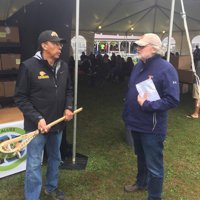
Professor Arnold with Tadodaho Sid Hill at the Haudenosaunee Wooden Stick Festival at the Onondaga Nation in 2017

Introducing the Wooden Stick Expo at Onondaga Lake Park in 2013
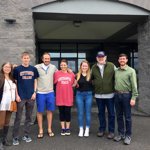
Philip Arnold with students from Gettysburg College at the Skä·noñh—Great Law of Peace Center in May 2016
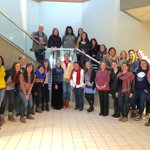
Philip Arnold with renown activist and writer Cherrie Moraga at the Skä·noñh—Great Law of Peace Center in March 2017
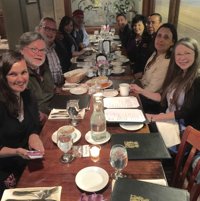
Philip Arnold at dinner with Winona LaDuke, March 2017

Philip Arnold in Teotihuacan, Mexico

